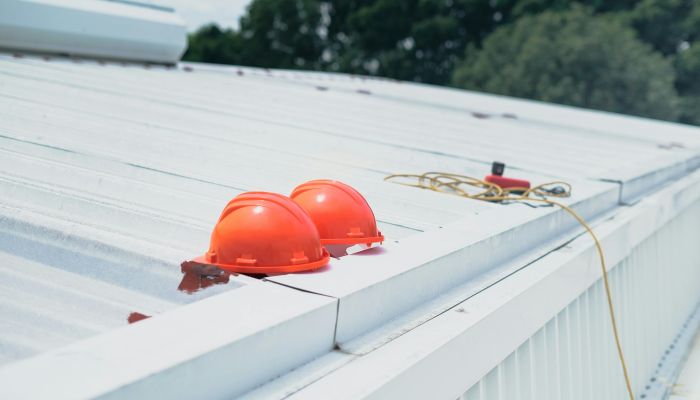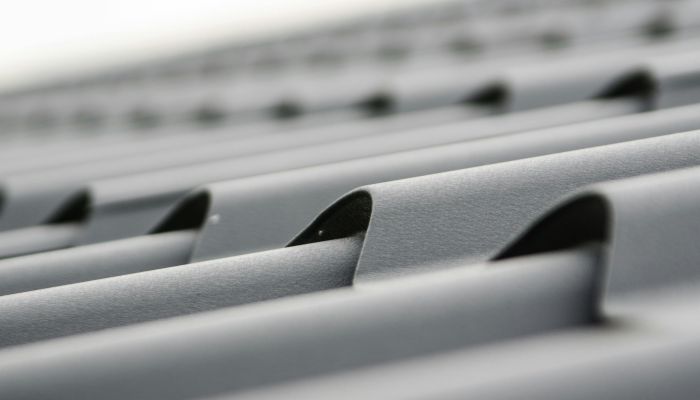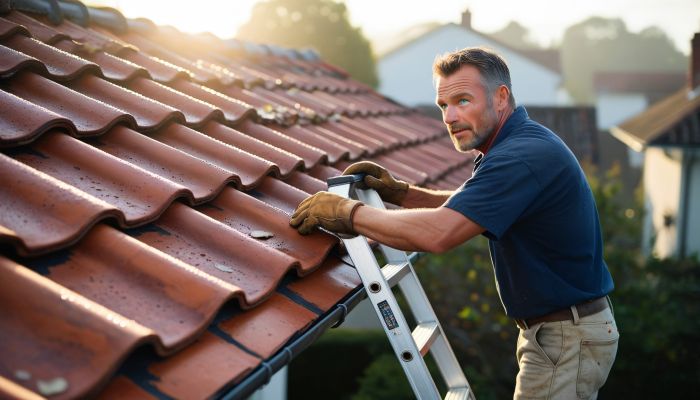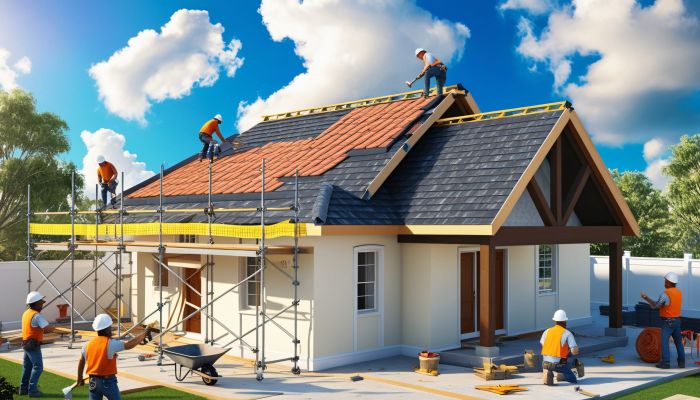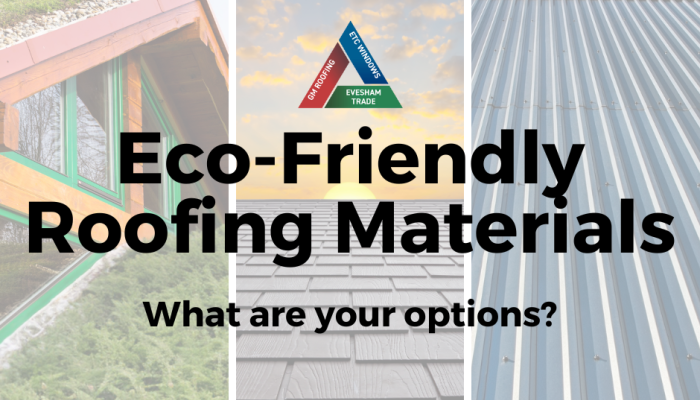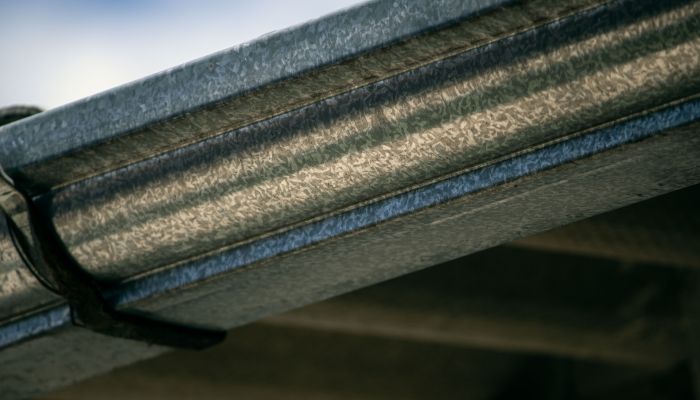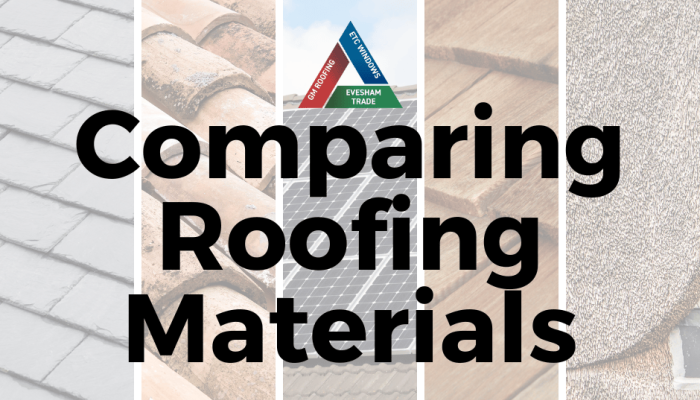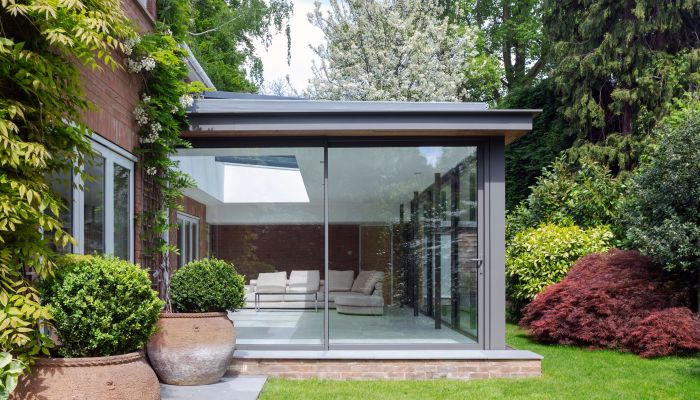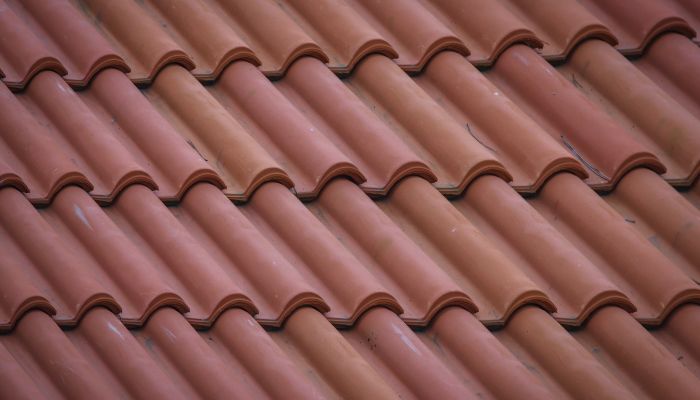Tiled Roofs: Pros and Cons, Maintenance, Cost, and More
Tiled Roofs: Pros and Cons, Maintenance, Cost, and More
Protecting your home from the elements while adding the essence of charm, not many choices come close to rivalling the classic and timeless appeal of tiled roofs. This article is the perfect resource for homeowners looking to elevate their homes aesthetically and functionally and for trade professionals searching for reliable roofing suppliers for their clients.
In this article, we will dive into all aspects of tiled roofing. Exploring its history, the different types of tiled roofs, the pros and cons, the installation process and thermal insulation with tiled roofing.
Whether you're starting your roofing repairs/upgrade journey or a tradesman looking to expand your knowledge and find a reputable, trusted supplier, you have come to the right place. Now let's get started shall we?
History of Roof Tiles
Clay Tiles: A Timeless Classic
Picture this: a sun-soaked Mediterranean landscape, with old villages flowing over the rolling hills beneath a clear blue sky. Here is where you will notice the origins of clay-tiled roofing. Clay roofing: an architectural marvel with such a rich history spanning back to the early days on Earth.
Clay-tiled roofing is often referred to as "terra cotta" roofing. Clay-tiles have been around for thousands of years. This roofing solution has withstood the test of time and the different architectural trends throughout the years, showing that sometimes the oldest methods are the best.
Clay-tiled roofing began with the start of civilization itself in the Middle East. The Sumerians, the first known human civilisation emerging in the early bronze ages around 5,000 BC, were among the first people to shape and fire clay into tiles. They used these tiles, which were created to be durable and weather resistant to create roofing for their homes with intricate designs telling stories about their cultures and beliefs.
The real surge in the popularity of clay tiles came around with the Renaissance in Europe. The Renaissance embraced the beauty and versatility of clay tiles with iconic locations such as Venice and Florence using a remarkable array of clay tiled roofing with them all being testaments to the skills of all of their local craftsmen.
With European people crossing the Atlantic and settling into their newfoundland, they brought their timeless traditional clay roofs with them to America. From red clay roofing and Spanish building styles in California to the colonial charms in New England clay tiles have spread across the world bringing an old-world elegance everywhere.
Back in the modern day, you can find clay tiles on many roofs including beautiful palaces and stunning temples in ancient Greece & Rome. These classical architectural buildings are masterpieces showcasing the elegance and durability of clay tiles.
Concrete Tiles: The Modern Choice
Concrete roofing might seem like a modern & recent invention. However, something you wouldn’t expect is concrete roofing tiles, which have deep roots that go all the way back to the early days. Early civilizations such as the Romans used concrete in their architecture. However it was only when the 19th century came around that concrete as we know it today came to be.
The creation of the modern concrete tile was thought up by a Frenchman named Adolphe Coignet. During the middle of the 19th century Coignet, who was an inventor and industrialist, developed a way to mass produce concrete blocks and concrete decorative roofing items. It had become a revolution!
It was the early 20th century when concrete roof tiles began to attract attention and widespread popularity. The advantages of them became clear and evident to everyone as they were more affordable and more durable than traditional and usual roofing materials. Their flexibility allowed for a range of architectural styles.
During the mid 20th century, concrete tiles evolved further and embraced modern design & technology in the creation process. The new technology allowed for the concrete tiles to be made lighter, stronger and more energy efficient!
Concrete tiles are not only extremely practical but also have the ability to blend perfectly into various different architectural styles across the world. Whether your concrete tiles are terracotta mediterranean vibes or sleek modernised grey slates their versatility is endless!
The concrete tile has evolved even more in recent years becoming much more environmentally friendly with certain manufacturers incorporating recycled materials into their process and production. Energy efficiency of concrete roof tiles has also been improved, helping homeowners to reduce their energy bills and carbon footprint.
Types of Roof Tiles
Clay Tiles
Clay roofing tiles are made from natural materials and natural clay that has been shaped and fired in a kiln, before being glazed to create the durable and weather resistant tiles we see today on many roofs all over the world. These tiles are considered timeless and celebrated for their durability and eco-friendliness. Coming in a range of colours, styles and textures it makes clay roof tiles a versatile choice for all properties.
Concrete Tiles
Concrete roofing tiles are made from a mix of sand, cement and water which is then moulded and cured to create the strong & long lasting roofing tiles we all know. Concrete tiles have excellent durability, fire resistance and weather resistance which is why they are a highly popular choice in both residential and commercial buildings. Concrete roofing tiles can be various colours, shapes and sizes which allow for diverse architectural buildings & styles. Concrete roofing tiles are renowned for their energy efficiency properties which help to maintain a stable and comfortable inside temperature. These roofing tiles can provide a more traditional or a more modern look proving their versatility combining aesthetics and functionality.
Metal Tiles
Metal roofing tiles are made out of thin metal sheets, they are typically made from materials such as steel, aluminium or copper and they are formed to take the shape of tiles. Metal roofing tiles are popular for their exceptional durability and resistance to harsh weather conditions such as heavy rain, snow and extreme temperatures (high or low). These tiles are lightweight and highly energy efficient, which helps to keep cool in warmer climates as they reflect sunlight and reduce energy costs. Their modern and sleek design and appearance means they are an attractive choice for modern architecture and design and offer a reliable and aesthetic roofing option.
Pros and Cons of Tiled Roofing
Advantages
Tiled roofing offers many advantages that make these tiles a popular choice amongst homeowners and property developers alike. Some key benefits include:
- Durability: they can withstand harsh weather conditions without deteriorating or needing repairs often.
- Longevity: tiled roofs have a longer lifespan and can often last over 50 years as long as they have proper maintenance and care. The longevity of these tiles give homeowners excellent value and reduces the need for roofing replacements.
- Energy efficiency: clay & concrete tiles both have natural insulation properties which help to regulate the temperature inside your home/property to keep your home cooler in the summer and warmer in the winter. This leads to reduced energy bills as energy is saved by not having the coolers or heaters on.
- Aesthetic value: tiled roofing can come in a whole range of different colours, styles and shapes, meaning that homeowners can choose a look that suits their taste and personality and a look that complements the architectural style of their house. The versatility enhances the curb appeal of your property and overall aesthetics of your property.
Disadvantages
While tiled roofing does have many advantages, there are also some disadvantages you should be aware of when making your decision:
- Weight: tiled roofing is heavier than most other roofing materials. This might mean that the underneath roofing structure will need additional reinforcement to support the weight of the roofing tiles, which may incur additional installation costs.
- High initial cost: tiled roofing can be expensive to install compared to other roofing styles. The initial investment can be quite a big drawback as a homeowner with a budget. However the initial investment cost can be recouped with reduced bills and low maintenance.
- Fragility: roofing tiles, especially clay and ceramic ones can be fragile and can be prone to breaking, smashing or cracking, if they are impacted heavily. This can include being walked on or subjected to big, heavy impacts such as falling branches etc. Replacing these tiles can rack up a costly bill and will require professional help to fix them.
- Complex installation: installing tiled roofs can be complex, more intense and require a longer period of time to install which can lead to longer installation times and increased labour costs.
- Maintenance: while tiled roofs are low maintenance, they do need occasional inspections to ensure the tiles are secure and don’t have any debris on them. Things such as moss and algae can grow on the roofing tiles which can cause issues in damp climates and need cleaning.
Installation Process
The installation of tiled roofing can be a complex job and require skilled professionals to carry the job out to ensure the job is completed to a high standard and ensure that it is a durable and weather resistant roofing.
Preparing the Roof
When preparing the roofing for installation the existing roof will be inspected to check it can support the weight of the tiles and if any repairs need to be made before the work commences. The roof is then checked for its proper alignment and how smooth it is.
Before the installation a waterproof underlay is applied over the rooding deck and this underlay serves as additional protection against water damage and leaks.
Flashing materials are then applied, these materials are like metal sheets or strips and these are installed around the vulnerable roofing areas such as chimneys, vents and skylights, to prevent
Laying the Tiles
Our roofers will carefully plan the layout of the tiles on the roof and take into consideration the design and aesthetic you, as the homeowner, desire. The proper alignment of your roofing tiles is key for functionality and appearance to keep your home warm, safe and dry. Often fitters will use starter tiles and install them along the eaves and rakes of your roof to make sure they have a straight and properly secure base to work the rest of the tiles onto.
When you choose clay or concrete tiles, fitters will use nails or screws to secure the tiles onto the deck of your roof. Tiles will be placed in an interlocking or an overlapping fashion to make sure they are resistant to the weather and rain.
The roofing fitters may need to cut or shape some of your roofing tiles to fit around any inconsistencies in your roof or to maintain the roofing tiled pattern you want.
Finishing Touches
Hip and ridge tiles get installed along the peaks and ridges of your roof to leave you with the perfect finished appearance and gives your roof an added layer of protection.
Roofing fitters will then use sealant or mortar to secure these ridge and hip tiles to fill in any gaps between tiles which may be there. Roofing valleys and flashing are also carefully sealed to prevent water leakages and weatherproof your roof.
Roof vents, ridge vents and other methods of ventilation are installed in your roofing to ensure that you have proper airflow and circulation through your home and to avoid any moisture build up in your loft or attic spaces. This is also the time when any additional roofing pieces may be added such as: snow guards or bird stops if they are needed.
When the roofing installation is completed an inspection should take place to ensure all tiles are secured and aligned as well as sealed, during this process the installation areas are cleared up and any debris left behind is taken away.
Thermal Insulation and Energy Efficiency
Tiled roofing possesses multiple different insulation and energy efficiency properties that can help to contribute to a comfortable temperature home and increased energy efficiency, whether the tiles are made from clay, concrete or any other material. These beneficial properties include:
- Natural insulation. Both clay and concrete roofing tiles possess natural insulation properties. They help to regulate the temperature inside your home by slowing downt he heat transfer process. During the warmer months the roofing tiles keep the inside of your home cooler as they prevent excess heat from coming into your home and in cooler weather the roofing tiles help to retain the heat already in your home and help to contain it in your home.
- Cool roof effect. In specific climates tiled roofs, more specifically those of lighter colour, tend to have something known as a ‘cool roof’ effect. These roofing tiles reflect the sun’s energy and reduce the amount of heat absorbed by the roof. This leads to lower roofing and indoor temperatures and reduces as much need for air conditioning and helps to save energy and cooling costs.
- Energy savings. The roofing tiles have the ability to reduce increased heat in the summer and heat loss in the winter months. This means that tiled roofing can end up saving energy which results in saving money.
- Ventilation compatibility. Tiled roofing is usually compatible with most roofing ventilation systems. This can help to enhance energy efficiency and promotes airflow, reducing heat buildup in the attic.
- Environmental impact. Tiled roofing materials, more specifically clay roofing tiles, are usually made from natural and sustainable materials. Some manufacturers like to incorporate recycled materials into their roofing tiles during production which helps to reduce the environmental impact and your environmental footprint.
Maintenance and Repair
Cleaning
Making sure your tiled roof is clean and free of debris and dirt is key to ensure the longevity and performance of your roof. Some cleaning tips include:
- Gutter cleaning. Keeping your gutters and downspouts clear of debris and cleaned properly is important to prevent water from backing up in your guttering. Clogged up gutters can lead to water infiltration underneath the tiles of your roof and into the roofing structure.
- Moss & algae removal. Damp and shaded areas of your roof are a breeding ground for moss and algae. Cleaning these areas of your roof periodically to prevent damage and to ensure proper drainage of your roof and roofing areas.
- Overhang. Not so much of a cleaning tip but a cleaning/maintenance tip for this one. It is recommended that you trim tree branches that overhang and hang over your roof. This is recommended because damage can be caused to your roof by falling branches, leaves and debris during hazardous weather conditions and bad storms.
Replacing Damaged Tiles
Conducting regular visual inspections of your roofing around once or twice a year can help to spot damage when it first occurs, before it gets worse and causes major problems. When inspecting your roof, make sure to look for cracked or damaged tiles, loose tiles, missing tiles or general wear and tear.
If you spot anything different or wrong with your roofing you should contact a professional to come out and take a look, repairing the roofing for you. Most companies, like us, offer a guarantee for the roofing they install, so keep this in mind when choosing your roofing installation company.
Cost Considerations
Initial Costs
When considering a tiled roof for your home there are also initial costs that you need to consider as well. These initial costs can vary depending on some factors however the overall initial costs of a tiled roof are expensive. The cost consideration factors that can affect the initial cost of tiled roofing include:
- Type of tile. The type of tile you choose can have a substantial impact on the cost of your roofing. Clay and concrete tiles are a popular option, clay tiles being more expensive due to their manufacturing processes.
- Roof size & shape. The obvious one stands here. The larger the roof the more materials and labour required to complete the job as well as the shape and complexity of the roof, which will lead to a higher expense.
- Labour costs. Labour costs can vary for the installation depending on the location, availability of skilled roofers as well as local labour rates.
- Removal of existing roof. If you are replacing an existing roof and removing the old one this can endure a cost by the disposal of the old roofing materials which can be considered as well.
Long-term Value
After that initial cost and investment is made. Your tiled roof can give you significant long term value. It will give you durability, energy efficiency values and aesthetic appeal for your home. Some of the main long-term value properties for tiled roofing include:
- Durability. Tiled roofs are known for their longevity. When properly installed and maintained the main material tiles can last around 50 years, maybe even more. The extended lifespan of your new tiled roofing means you won’t have to replace the roofing very often at all and will in turn save you, as the homeowner, money in the long term.
- Low maintenance. Tiled roofing is mainly low maintenance. They don’t rot, warp or deteriorate like other roofing. This low rate of deterioration means there are much much fewer repair costs and less maintenance over the years, once again reducing costs.
- Energy efficiency. Tiled roofing offers the homeowner natural insulation for their home and helps to regulate the temperatures inside your home. The tiles on your roof reflect sunlight and the sun's heat, which can result in lower energy bills.
- Environmental benefits. Most clay and concrete roofing tiles are made from natural and sustainable materials that some manufacturers include in theri tile production, reducing their environmental impact.
ETC's Expertise in Tiled Roofs
All of our GM Roofing teams are employed, developed and trained by us. Each of our employees are fully aware of the company's mission to provide excellent service and keep the highest quality standard possible. Here at GM Roofing we have an unrivalled reputation for quality roofing in the Vale of Evesham and our surrounding communities. Every member of our team is fully trained to install a tiled roof and why we continue to install tiled roofs in your homes for over 25 years.
Conclusion
To finish this article, tiled roofing stands the testament of time to the enduring blend of craftsmanship, functionality and aesthetic appeal. This article has outlined the history, benefits, maintenance and long-term value of tiled roofs and provided you with valuable and important information you may need when looking to invest in a new tiled roof for your home.
It has become clear throughout this article that these roofing solutions are more than just a shelter for your home, but a statement and architectural feature that weather the test of time.
With amazing longevity, reduced maintenance and the high potential for long-term savings in your home, tiled roofing represents a high quality choice for a roofing solution on every home.
FAQs
It isn’t likely that you will need planning permission to re-roof your home, however our survey will be able to help you out more with this and advise you on what steps to take if you need to take any during your survey.
Here at GM Roofing we can arrange an appointment for one of our surveyors to come to your home to discuss the requirements and fine details of your roofing project. After this survey has been conducted we will send you a detailed quotation which will fully inform you of the costs of the installation and any other costs which may be involved.
At GM Roofing we usually install tiles made from clay, ceramic tiles or concrete tiles.
You can replace a thatched roof with tiles if you decide to do so. The thatching materials must be fully removed down to the bare rafters. Here at GM Roofing we will conduct a full site survey to replace the thatch with tiles and can offer experience working with thatched structures.
GM Roofing will provide all customers with a comprehensive 10 year guarantee on tiled roofs which covers all work that has been completed.
Transform Your Home with Our Tiled Roofing Services
Invest in a roofing solution that not only stands the test of time but enhances the aesthetic appeal of your home. With over 50 years of durability, our tiled roofing is an investment for the future. Our in-house team of experts are committed to delivering a quality service tailored to your needs.
